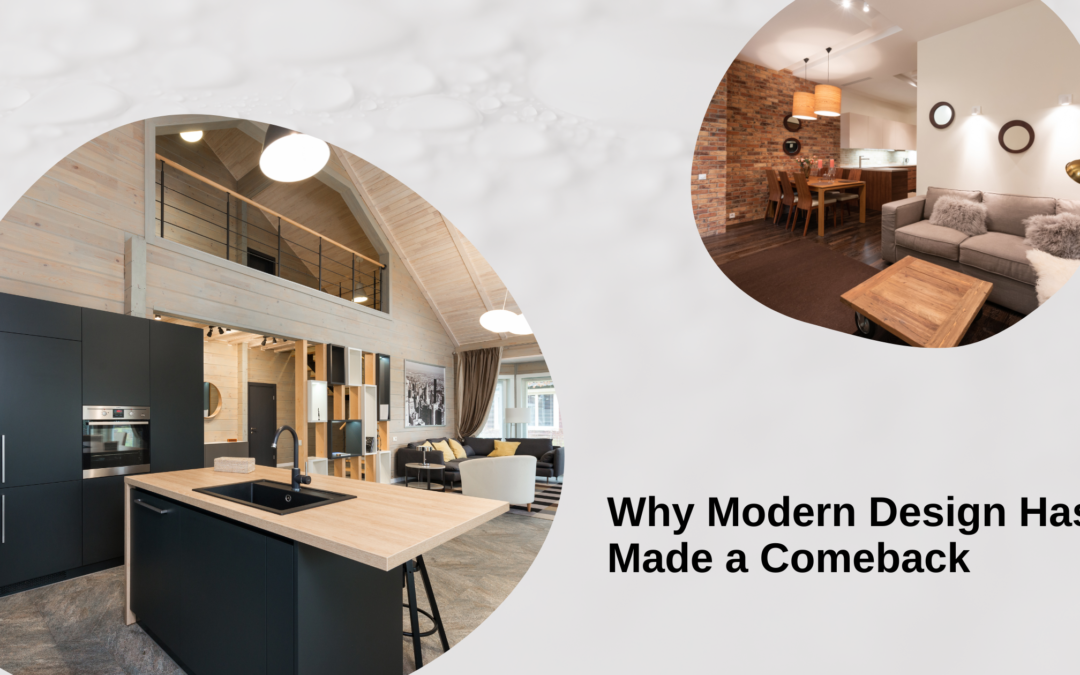In recent years, modern design has experienced a remarkable resurgence, captivating design enthusiasts, homeowners, and businesses alike. With its clean lines, simplicity, and functionality, modern design has become a prominent and sought-after aesthetic. This article explores the reasons behind the revival of contemporary design, its defining characteristics, and its impact on various domains.
Modern design, also known as mid-century or contemporary modern, originated in the early to mid-20th century as a response to the ornate and elaborate styles preceding it, such as Victorian and Art Nouveau. It emerged with a focus on simplicity, functionality, and minimalism, emphasizing clean lines and the integration of industrial materials.
So, what factors have contributed to the resurgence of modern design in recent years? One significant factor is the shifting lifestyle and preferences of individuals. As our lives become more fast-paced and cluttered, there is a growing desire for simplicity and minimalism in our surroundings. Modern design offers an antidote to chaos, providing clean and organized spaces that promote calmness and well-being.
The influence of technology and digital culture has also played a significant role in the resurgence of modern design. With the rise of technology and the digital age, there is a greater appreciation for the sleek and futuristic aesthetics that modern design embodies. People are drawn to its association with progress, innovation, and technology integration into everyday life.
Moreover, the increasing emphasis on sustainability and environmental consciousness has contributed to the resurgence of modern design. Modern design’s focus on efficiency, sustainability, and eco-friendly materials resonates with individuals seeking environmentally conscious lifestyles. As people become more aware of the impact of their choices on the planet, the timeless appeal of modern design aligns with their values and aspirations.
Another reason for the comeback of modern design is the desire for timeless aesthetics. Despite originating decades ago, modern design continues to captivate with its sleek, clean lines and elegant simplicity. Its timeless appeal transcends trends, allowing individuals to create spaces with a sense of sophistication and contemporary elegance.
Modern design has left an indelible mark on various domains. Architecture and interior design embrace open spaces, large windows, and integration with the surrounding environment. Furniture and decor inspired by modern design focus on functionality, comfort, and striking aesthetics. Modern design principles heavily influence graphic design and branding, with clean typography and minimalistic layouts prevalent in modern-inspired designs. Even in the fashion world, modern design has returned with its sleek silhouettes, clean lines, and a focus on high-quality materials.
The impact of modern design goes beyond aesthetics. It enhances user experience by prioritizing functionality and intuitive design solutions. Its versatility allows it to blend seamlessly with various interior styles, adapting to different environments. Modern design also promotes creativity and innovation, encouraging designers to think outside the box and find groundbreaking solutions. Its influence has extended to other design movements, shaping the evolution of design in the present day.
As modern design continues to make a comeback, it integrates into everyday life. From homes and workplaces to public spaces and transportation, modern design is all around us, shaping our experiences and inspiring us with its timeless aesthetics.
In conclusion, the resurgence of modern design can be attributed to its timeless appeal, focus on simplicity, functionality, and sustainability, and ability to adapt to individuals’ changing needs and preferences. As we navigate the complexities of the modern world, the enduring allure of modern design offers solace, inspiration, and a glimpse into the possibilities of contemporary living.
FAQs
1. What is the difference between modern design and contemporary design?
While the terms “modern design” and “contemporary design” are often used interchangeably, there is a subtle difference. Modern design refers specifically to the design style that emerged in the mid-20th century, whereas contemporary design refers to the design trends and styles of the present day.
2. Can modern design be combined with other design styles?
Absolutely! Modern design’s versatility allows it to be combined with other design styles. It can complement traditional, industrial, or even eclectic aesthetics, creating a unique and personalized look.
3. How can I incorporate modern design elements in my home?
To incorporate modern design elements in your home, focus on clean lines, minimalism, and functionality. Opt for furniture with sleek silhouettes, choose a neutral color palette, and embrace open spaces. Incorporate industrial materials like glass, steel, or concrete, and showcase abstract art or minimalist decor to enhance the modern aesthetic.


